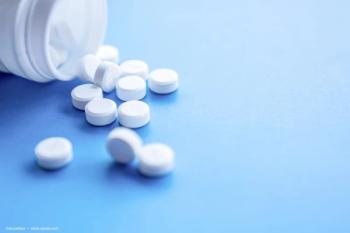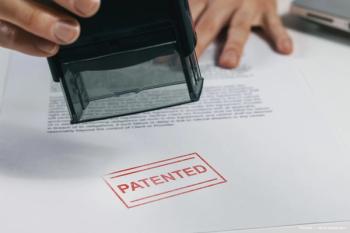
Prosthesis system may help blind patients 'see' again
The visual cortical prosthesis system provided some functional vision to blind patients in a 12-month assessment of the device.
This article was reviewed by Nader Pouratian, MD, PhD
The early results of a feasibility study of a visual cortical prosthesis system (Orion, Second Sight Medical Products) indicate that the product has significant potential to provide some functional vision to previously sighted patients with no light perception with a good safety profile.
“The goal of this study was to develop a visual cortical prosthetic device that stimulates the visual cortex directly by bypassing the eyes and the optic apparatus in blind patients,” said Nader Pouratian, MD, PhD. “This approach was designed to leverage the available and approved retinal prosthetic technology.”
Dr. Pouratian is professor and vice chairman of Academic Affairs, Department of Neurosurgery, David Geffen School of Medicine, University of California Los Angeles.
The device uses glasses, a camera implanted into the glasses, and an adapted video processing unit that converts the video input into a stimulation pattern. An electrode array is implanted over the medial occipital lobe over the V1 and V2 areas, and facilitates communication through wireless radiofrequency communication and power.
This phase I interim feasibility study, which is the first test performed in humans to evaluate this device, evaluated the safety of placing and activating an electrode array on the medial surface of the occipital lobe in blind patients, the functionality of the device in providing some artificial vision, its utility in these patients, as well as the nature of the vision provided.
The investigators also wanted to obtain user input in order to iterate the design of the device and software and proceed with the next study phase, according to Dr. Pouratian.
Safety
The primary concern with an experiment such as this, Dr. Pouratian explained, was induction of seizures as a result of direct cortical stimulation,” he explained, and also pointed out, that the investigators were unclear about what results to anticipate from the blind patients using the device.
The study included patients who had been previously sighted and who became blind (no light perception vision or bare light perception) as the result of any cause other than damage to the visual cortex, which included optic neuropathy, head trauma from various causes, endophthalmitis, and congenital glaucoma.
Patients with brain injuries were excluded. Five men and one woman were included in the study. The average duration of blindness was 15 years, Dr. Pouratian recounted.
Six adverse events related to the implant procedure or the device occurred in two of the six patients. These included a seizure in one patient, which occurred in a clinical setting where the initial three months of testing took place; the patient recovered and returned home the same day.
Nonserious events in two patients were bilateral hand twitching, headache, visual aura, and visual phenomenon. The other four patients had no events related to the device or procedure, Dr. Pouratian reported.
Functionality
Another study end point was the determination of the reliability of the device in eliciting phosphenes. Among the six patients, the average threshold at which phosphenes were perceived was about 2,000 microamps to obtain visual perception of a flash or circle of light.
“Importantly, of the 60 contacts that were implanted over the primary and secondary visual cortices, the vast majority of the contacts resulted in a perceived phosphene,” he commented.
During testing, the implanted patients were evaluated with a square localization task.
Dr. Pouratian demonstrated that with the device turned on, the patients were able to locate the square; this was in contrast to testing without the device during which the investigators found a great deal of variability in the patients’ ability to locate the square. All but one patient showed improvement in their ability to complete this task after using the device for 12 months.
Another test evaluated the identification of the direction of motion, in which lines moved across the screen viewed by the patients. With the device off, they were unable to detect the direction of motion and with the device on they were able to do so. After 12 months, all patients showed improvements in detecting the direction of motion.
The final test was that of grating visual acuity, a much more difficult task in which gratings were presented for 5 seconds.
At the six-month time point, no patients scored on the scale either with the device on or off. At 12 months, two patients scored on the scale with the device on (2.8 and 2.2 logarithm of the minimum angle of resolution visual acuity).
An important consideration, Dr. Pouratian explained, is that the previously described tasks are artificial, not real, vision.
“A quality-of-life assessment by all five patients with 12-month follow-up reported mild or positive improvement with use of the device,” he said.
Generally, the patients have reported success with use of the Orion in practical everyday tasks, such as the ability to find cars parked on the side of the street, find a cue ball on a pool table with no problem, determine if they were walking from left to right or right to left along a wall, and sort laundry.
A comparison with the Argus II, a retinal prosthetic also from Second Sight Medical Products, at 12 months showed that patients had relatively similar outcomes in functional improvement with both devices.
“The early results with the Orion are promising and the device has a favorable safety profile,” Dr. Pouratian concluded. “A seizure occurred in one patient in a controlled setting when stimulation paradigms were being explored. No system failures occurred. ll subjects with 12 month follow-up perceived phosphenes and reported functional improvements. Although this study included only a small number of patients, the results are encouraging. Visual rehabilitation is important; we are providing artificial vision and not restoring vision, which is an important consideration.”
Nader Pouratian, MD, PhD
E: [email protected]
Dr. Pouratian is a consultant for Second Sight.
Newsletter
Don’t miss out—get Ophthalmology Times updates on the latest clinical advancements and expert interviews, straight to your inbox.


















































.png)


